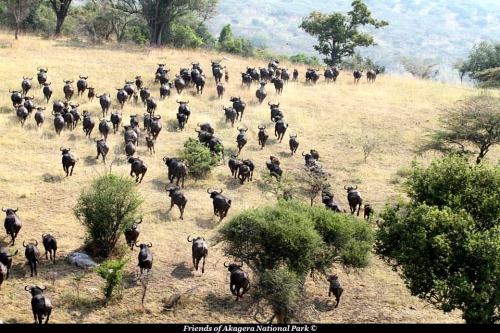Akagera: Rwanda’s beacon of hope
05/04/2014
By Sophie Roberts
African sandalwood crackles in the firepit as a potjie fish stew bubbles in the embers. This will be our dinner, eaten under the soft light of lanterns hanging from a fig tree. Its canopy, teeming with vervet monkeys, spreads over the wooden deck of Ruzizi Tented Lodge – a new camp made up of seven simple tents on raised platforms on the shore of Lake Ihema in eastern Rwanda.
Night is closing in. The darkening sky turns to indigo, the water to black, with floating islands of papyrus moving as silently as ghosts. A spurwing goose skims the surface; nests of weaver birds hang like golden baubles as they catch the last glow of sun.
It was here beside Lake Ihema, in what is now Akagera National Park, that explorer Henry Morton Stanley camped in 1876 (indeed his visit gave the lake its name – ihema means “tent” in Kinyarwanda). The landscape retains an enduring emptiness, the sounds little changed more than a century later: the call of frog and Hueglin’s robin interrupted by rumbling grunts from a raft of hippo.
But as I gaze over the lake, I’m also reminded of the Akagera described to me earlier that day by my Rwandan driver-guide Alex Kagaba. We had been visiting Kigali’s Genocide Memorial centre as it prepared to mark the 20th anniversary of the Rwandan massacre. In the 100 days that followed April 7 1994, an estimated 800,000 were murdered, tens of thousands were tortured, mutilated or raped, 300,000 children were orphaned, and dogs ate corpses in the streets.
Like many Tutsis, Kagaba had sought safety in the bush, camping on the Rwanda-Tanzania border, close to the Kagera River on the edge of the national park. Joining up with the Nyabarongo River flowing from Kigali, the Kagera carried bodies all the way to Lake Victoria in Uganda, where locals no longer ate the fish for fear of poisoning. “To find a human being who is meant to be living, and to see him floating in a river being eaten by crocodiles when he should have been buried – that image still comes and goes all the time,” says Kagaba.
FULL ARTICLE : FINANCIAL TIMES : HERE
A découvrir aussi
- Interview of Rica RWIGAMBA Head of Rwanda Tourism and Conservation
- Akagera National Park workers get a new unifrom
- Ces 20 parcs naturels Africains qui vont vous faire rêver

